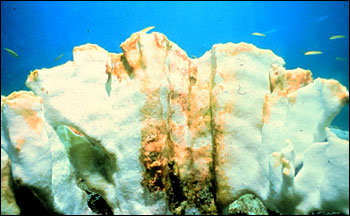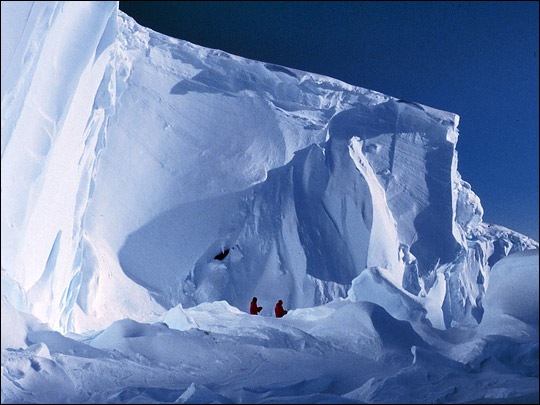

Effects of Earth’s Energy Imbalance | |||
Despite Earth’s inertia, some results of climate change have already become apparent. Hansen and colleagues identified 2005 as the warmest year on record, although other global monitoring teams’ assessments differ slightly, placing 1998 just ahead of 2005. “Whether 2005 or 1998 is the warmest is not scientifically that important,” says Hansen. “Nineteen ninety-eight leaped up far above any previous temperature because it coincided with the El Niño of the century. Now we’ve got back to approximately the same temperature without the help of an El Niño, so it just confirms the strong underlying global warming trend.” |
|||

Besides changes to ecosystems resulting in phenomena like coral bleaching, warmer ocean temperatures can affect those of us on land by bringing different weather patterns. No one can conclusively pin the unusually destructive hurricane season of 2005 squarely on global warming, but storms like Katrina are more likely to occur in an environment of warmer sea-surface temperatures. “Global warming probably does play a role,” says Hansen. “That doesn’t mean there aren’t natural fluctuations, and it doesn’t mean storms like Katrina and Rita will happen every year. It depends on the weather, not just the average sea-surface temperature. Nevertheless, I think that more severe storms are one impact of a warmer ocean.” Another consequence of warmer ocean temperatures that concerns Hansen is a potential change to sea level from melting ice shelves. Ice shelves are thick slabs of ice attached to coastlines. Fed by glaciers, these shelves extend out over the ocean’s surface. “Something that needs to be understood better is the effect of this ocean heat on ice shelves. There are some ice shelves, both in West Antarctica and Greenland, that have thinned substantially over the past several years,” he says. |
Warmer ocean temperatures cause some species of Caribbean coral to expel their algae in a phenomenon known as coral bleaching. (Photo courtesy NOAA Photo Library.) | ||
 | |||
Ice shelves have shown other changes besides thinning. Between 1995 and 2002, parts of the Larsen Ice Shelf on the Antarctic Peninsula disintegrated. In the wake of the 2002 disintegration event, glaciers feeding that part of the Larsen Ice Shelf accelerated. Ted Scambos, lead scientist at the National Snow and Ice Data Center at the University of Colorado, Boulder, agrees with Hansen’s assessment. “Warmer oceans are definitely having an effect on some of the world’s largest glaciers. While in some areas, like the Larsen, it’s warmer air temperatures that have done the most damage, for the large, floating ice tongues—a kind of shelf—off Greenland and Antarctica, the warmth in the ocean is leading the way.” Neither Willis’ paper on ocean temperatures, nor Hansen’s paper on the energy budget is the last word on this issue. Willis stresses that taking the ocean’s temperature is an ongoing process. Meanwhile, climate models continue to be refined. What the researchers do know, however, is that the Earth now absorbs more energy than it emits back to space. While that energy hides in the ocean, its effects aren’t immediately felt in the average global surface temperature. The future may bring additional warming, however, as the Earth’s entire climate system responds to the current energy imbalance.
|
The Ross Ice Shelf is part of a massive ice shelf in West Antarctica. If this ice shelf were to disintegrate, the breakup would accelerate the flux of glaciers from East and West Antarctica into the ocean. These glaciers would displace their own mass and increase the rate of sea level rise. (Photo courtesy NOAA Photo Library.) | ||